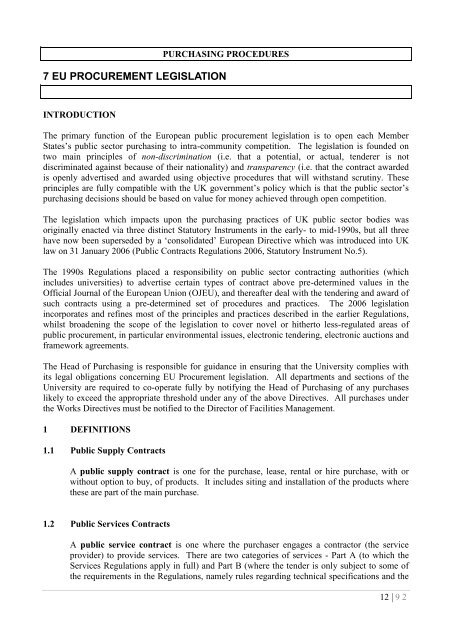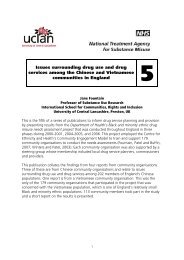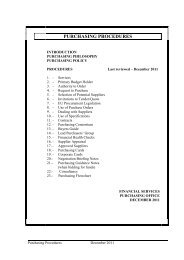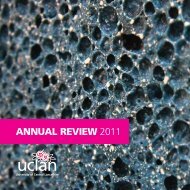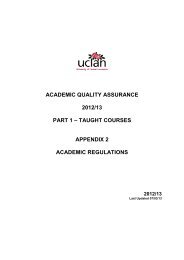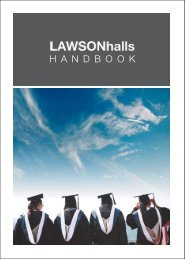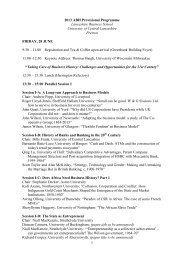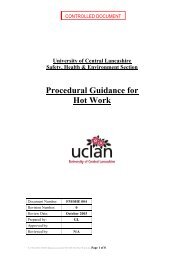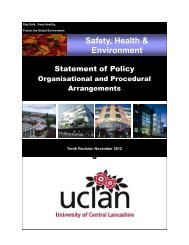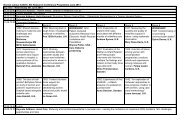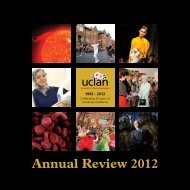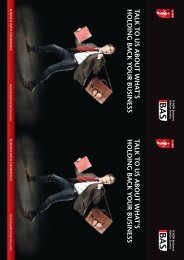Purchasing procedures - University of Central Lancashire
Purchasing procedures - University of Central Lancashire
Purchasing procedures - University of Central Lancashire
Create successful ePaper yourself
Turn your PDF publications into a flip-book with our unique Google optimized e-Paper software.
PURCHASING PROCEDURES<br />
7 EU PROCUREMENT LEGISLATION<br />
INTRODUCTION<br />
The primary function <strong>of</strong> the European public procurement legislation is to open each Member<br />
States‟s public sector purchasing to intra-community competition. The legislation is founded on<br />
two main principles <strong>of</strong> non-discrimination (i.e. that a potential, or actual, tenderer is not<br />
discriminated against because <strong>of</strong> their nationality) and transparency (i.e. that the contract awarded<br />
is openly advertised and awarded using objective <strong>procedures</strong> that will withstand scrutiny. These<br />
principles are fully compatible with the UK government‟s policy which is that the public sector‟s<br />
purchasing decisions should be based on value for money achieved through open competition.<br />
The legislation which impacts upon the purchasing practices <strong>of</strong> UK public sector bodies was<br />
originally enacted via three distinct Statutory Instruments in the early- to mid-1990s, but all three<br />
have now been superseded by a „consolidated‟ European Directive which was introduced into UK<br />
law on 31 January 2006 (Public Contracts Regulations 2006, Statutory Instrument No.5).<br />
The 1990s Regulations placed a responsibility on public sector contracting authorities (which<br />
includes universities) to advertise certain types <strong>of</strong> contract above pre-determined values in the<br />
Official Journal <strong>of</strong> the European Union (OJEU), and thereafter deal with the tendering and award <strong>of</strong><br />
such contracts using a pre-determined set <strong>of</strong> <strong>procedures</strong> and practices. The 2006 legislation<br />
incorporates and refines most <strong>of</strong> the principles and practices described in the earlier Regulations,<br />
whilst broadening the scope <strong>of</strong> the legislation to cover novel or hitherto less-regulated areas <strong>of</strong><br />
public procurement, in particular environmental issues, electronic tendering, electronic auctions and<br />
framework agreements.<br />
The Head <strong>of</strong> <strong>Purchasing</strong> is responsible for guidance in ensuring that the <strong>University</strong> complies with<br />
its legal obligations concerning EU Procurement legislation. All departments and sections <strong>of</strong> the<br />
<strong>University</strong> are required to co-operate fully by notifying the Head <strong>of</strong> <strong>Purchasing</strong> <strong>of</strong> any purchases<br />
likely to exceed the appropriate threshold under any <strong>of</strong> the above Directives. All purchases under<br />
the Works Directives must be notified to the Director <strong>of</strong> Facilities Management.<br />
1 DEFINITIONS<br />
1.1 Public Supply Contracts<br />
A public supply contract is one for the purchase, lease, rental or hire purchase, with or<br />
without option to buy, <strong>of</strong> products. It includes siting and installation <strong>of</strong> the products where<br />
these are part <strong>of</strong> the main purchase.<br />
1.2 Public Services Contracts<br />
A public service contract is one where the purchaser engages a contractor (the service<br />
provider) to provide services. There are two categories <strong>of</strong> services - Part A (to which the<br />
Services Regulations apply in full) and Part B (where the tender is only subject to some <strong>of</strong><br />
the requirements in the Regulations, namely rules regarding technical specifications and the<br />
12 | 9 2


